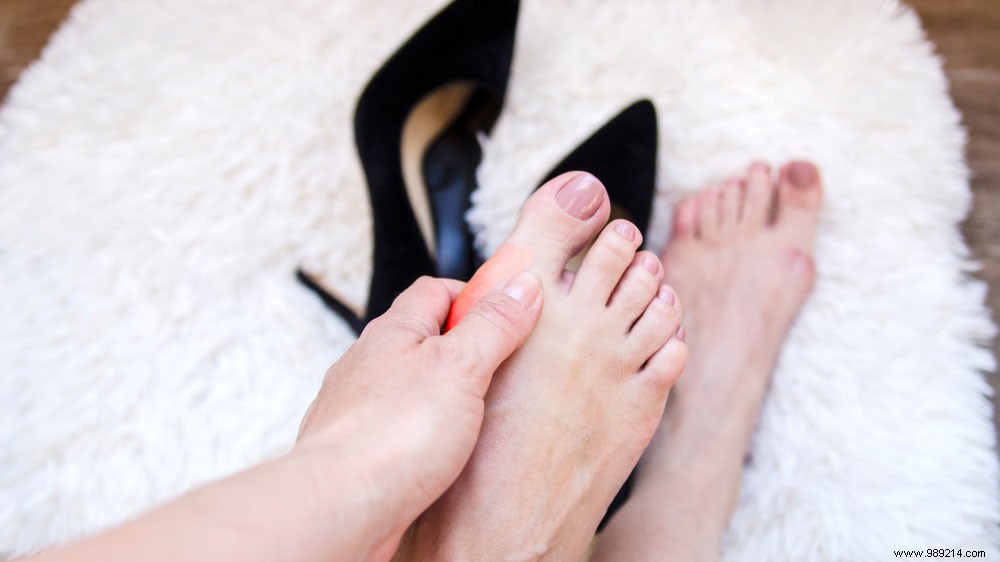
Do you have a bump on the side of your big toe? Maybe it's a bunion, also called hallux valgus. We tell you what you can do about it.
A bunion or hallux valgus is a deformity of the big toe. The toe grows crooked and this can cause a bump on the side of your foot. A bunion can be very painful and sometimes difficult in your shoes. Often the bunion is hereditary and congenital. Sometimes such a bump can also be caused by wearing shoes that are too high or narrow. Your entire body weight then leans on your forefoot.
Read also: 'Why can I walk in heels for less time than before?'
Your genes have an influence. Some people naturally have wide forefoot or slack tires. That gives more chance of friction and therefore more chance of a bunion. Even as you get older, your tires weaken, causing your forefoot to sag faster. This creates more pressure points, especially on your big toe. It therefore becomes more difficult to fit properly in a shoe.
If you wear high heels or shoes that are too narrow, you can develop a bunion. The height of your heels matters. The higher the heels, the further your forefoot slides forward, the tighter you pinch your toes and the heavier the pressure of your body weight on your big (or small) toe. Especially if your shoes have narrow toes that pinch your toes together, that can be bad if you wear them a lot. Chronic tissue damage can occur. That inflamed tissue forms a bunion.
Have a specialist look at your bunion:a podiatrist's insole can support your forefoot and restore the arch of your foot. It gives your foot more comfort and support. This makes the big toe less curved and there is less tension on the foot joint. Unfortunately, it is no longer possible to fully recover. You can only make sure it doesn't get worse. If you can no longer walk because of the pain, surgery is possible. The operation is quite tough and is therefore only done if the complaints are serious.
It is therefore important to prevent a (worsening of your) bunion. So don't be stubborn and don't stuff your feet into a pair of tight heels every day. Do you feel your big or small toe getting red and sore? Take off your heels and slip your feet into a pair of sneakers, loafers or ballerinas.
Text:Loes van de Mosselaar | Image:Shutterstock